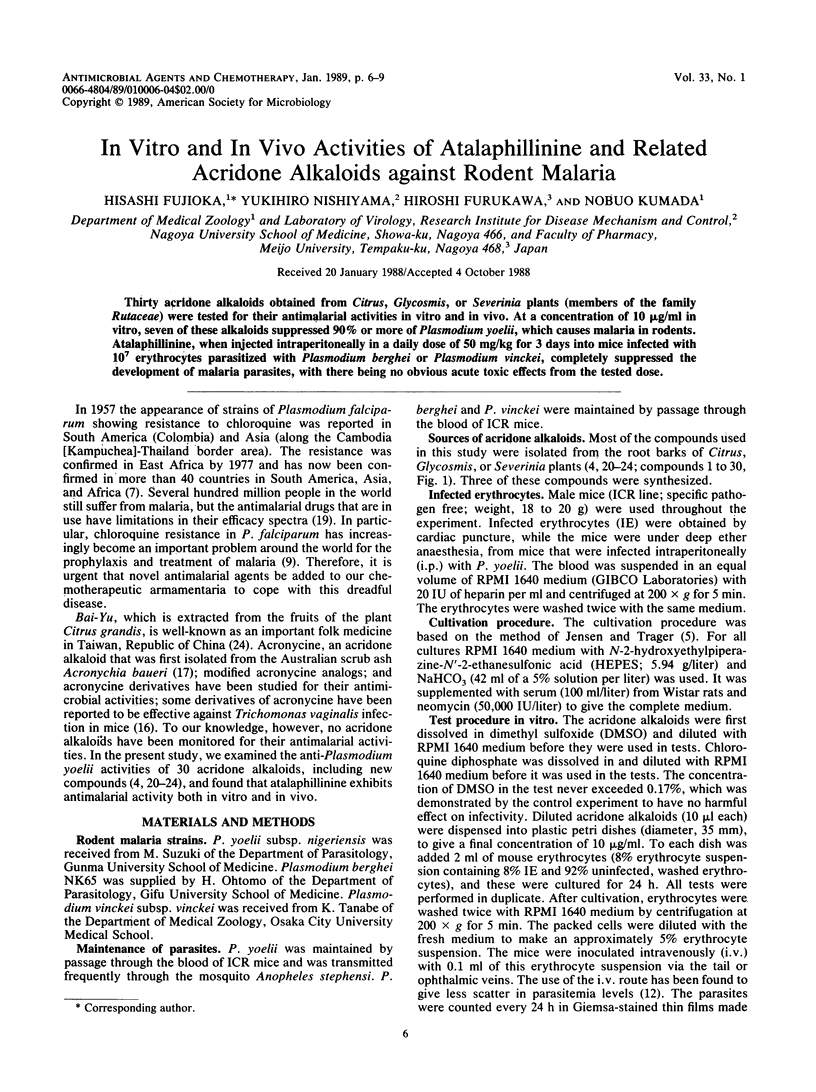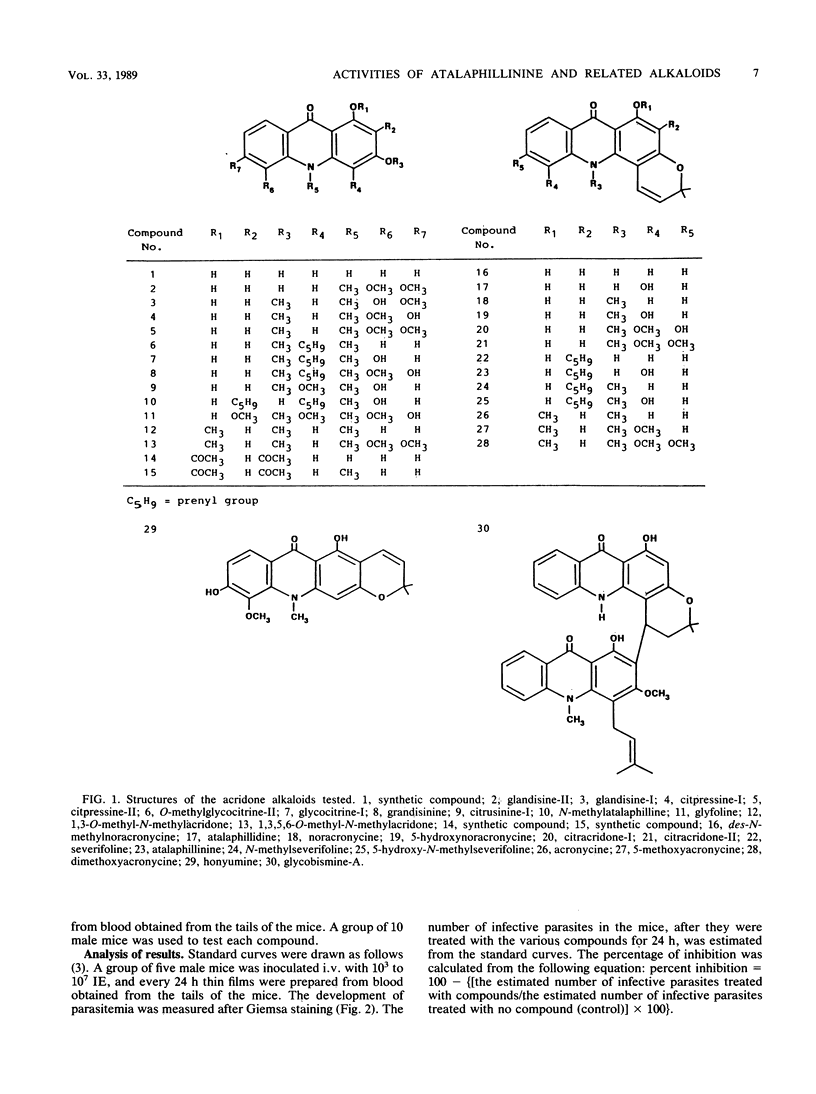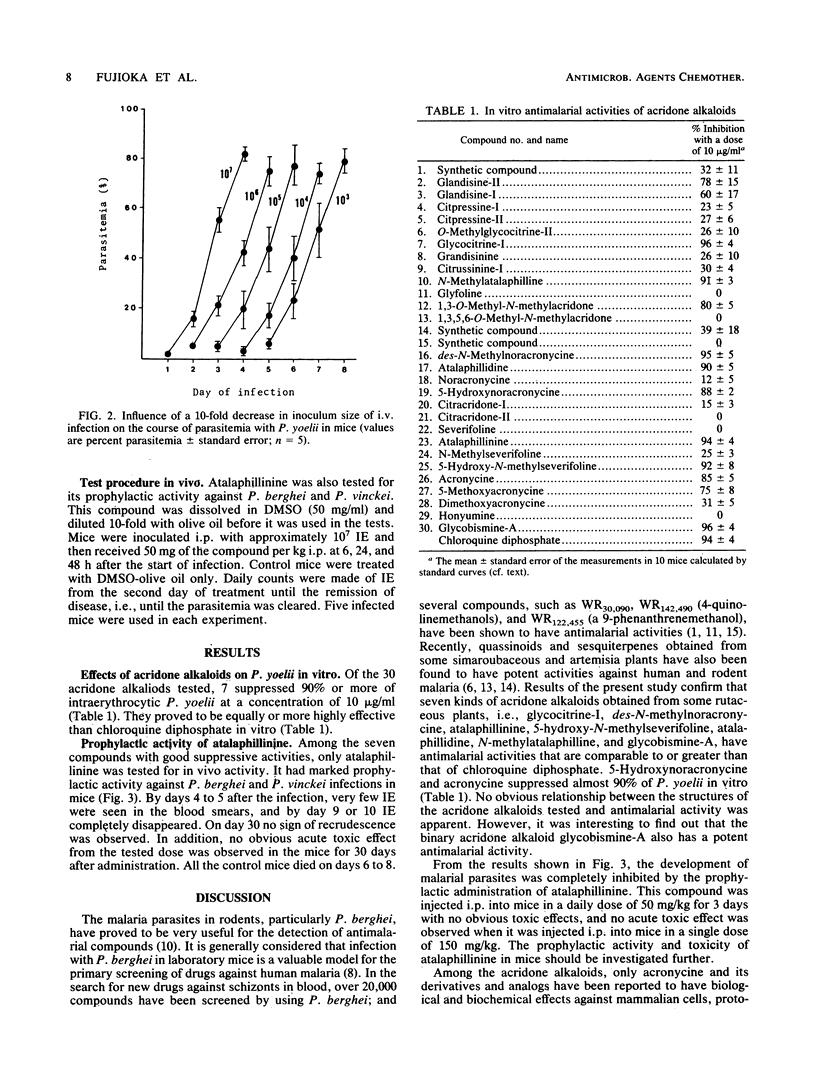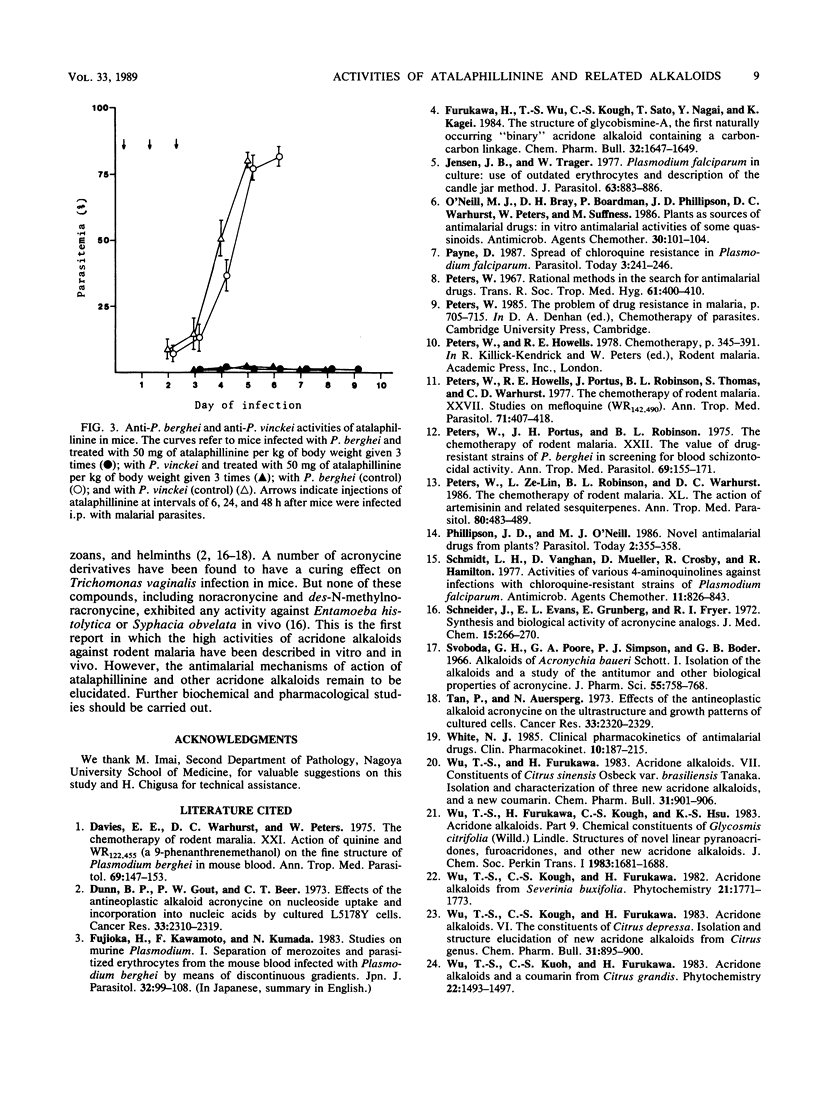Abstract
Thirty acridone alkaloids obtained from Citrus, Glycosmis, or Severinia plants (members of the family Rutaceae) were tested for their antimalarial activities in vitro and in vivo. At a concentration of 10 micrograms/ml in vitro, seven of these alkaloids suppressed 90% or more of Plasmodium yoelii, which causes malaria in rodents. Atalaphillinine, when injected intraperitoneally in a daily dose of 50 mg/kg for 3 days into mice infected with 10(7) erythrocytes parasitized with Plasmodium berghei or Plasmodium vinckei, completely suppressed the development of malaria parasites, with there being no obvious acute toxic effects from the tested dose.
Full text
PDF



Selected References
These references are in PubMed. This may not be the complete list of references from this article.
- Davies E. E., Warhurst D. C., Peters W. The chemotherapy of rodent malaria, XXI. Action of quinine and WR 122 (a 9-phenanthrenemethanol) on the fine structure of Plasmodium berghei in mouse blood. Ann Trop Med Parasitol. 1975 Jun;69(2):147–153. [PubMed] [Google Scholar]
- Dunn B. P., Gout P. W., Beer C. T. Effects of the antineoplastic alkaloid acronycine on nucleoside uptake and incorporation into nucleic acids by cultured L5178Y cells. Cancer Res. 1973 Oct;33(10):2310–2319. [PubMed] [Google Scholar]
- Jensen J. B., Trager W. Plasmodium falciparum in culture: use of outdated erthrocytes and description of the candle jar method. J Parasitol. 1977 Oct;63(5):883–886. [PubMed] [Google Scholar]
- O'Neill M. J., Bray D. H., Boardman P., Phillipson J. D., Warhurst D. C., Peters W., Suffness M. Plants as sources of antimalarial drugs: in vitro antimalarial activities of some quassinoids. Antimicrob Agents Chemother. 1986 Jul;30(1):101–104. doi: 10.1128/aac.30.1.101. [DOI] [PMC free article] [PubMed] [Google Scholar]
- Payne D. Spread of chloroquine resistance in Plasmodium falciparum. Parasitol Today. 1987 Aug;3(8):241–246. doi: 10.1016/0169-4758(87)90147-5. [DOI] [PubMed] [Google Scholar]
- Peters W., Howells R. E., Portus J., Robinson B. L., Thomas S., Warhurst D. C. The chemotherapy of rodent malaria, XXVII. Studies on mefloquine (WR 142,490). Ann Trop Med Parasitol. 1977 Dec;71(4):407–418. doi: 10.1080/00034983.1977.11687206. [DOI] [PubMed] [Google Scholar]
- Peters W., Li Z. L., Robinson B. L., Warhurst D. C. The chemotherapy of rodent malaria, XL. The action of artemisinin and related sesquiterpenes. Ann Trop Med Parasitol. 1986 Oct;80(5):483–489. doi: 10.1080/00034983.1986.11812054. [DOI] [PubMed] [Google Scholar]
- Peters W. The problem of drug resistance in malaria. Parasitology. 1985 Apr;90(Pt 4):705–715. doi: 10.1017/s003118200005232x. [DOI] [PubMed] [Google Scholar]
- Phillipson J. D., O'Neill M. J. Novel antimalarial drugs from plants? Parasitol Today. 1986 Dec;2(12):355–359. doi: 10.1016/0169-4758(86)90058-x. [DOI] [PubMed] [Google Scholar]
- Schmidt L. H., Vaughan D., Mueller D., Crosby R., Hamilton R. Activities of various 4-aminoquinolines against infections with chloroquine-resistant strains of Plasmodium falciparum. Antimicrob Agents Chemother. 1977 May;11(5):826–843. doi: 10.1128/aac.11.5.826. [DOI] [PMC free article] [PubMed] [Google Scholar]
- Schneider J., Evans E. L., Grunberg E., Fryer R. I. Synthesis and biological activity of acronycine analogs. J Med Chem. 1972 Mar;15(3):266–270. doi: 10.1021/jm00273a014. [DOI] [PubMed] [Google Scholar]
- Tan P., Auersperg N. Effects of the antineoplastic alkaloid acronycine on the ultrastructure and growth patterns of cultured cells. Cancer Res. 1973 Oct;33(10):2320–2329. [PubMed] [Google Scholar]
- White N. J. Clinical pharmacokinetics of antimalarial drugs. Clin Pharmacokinet. 1985 May-Jun;10(3):187–215. doi: 10.2165/00003088-198510030-00001. [DOI] [PubMed] [Google Scholar]


